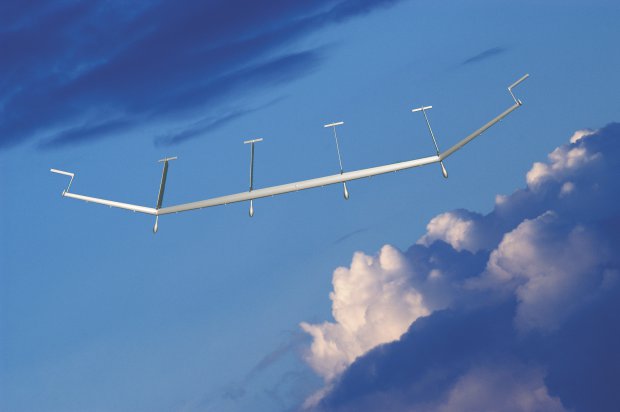The US Navy is showing interest in the Defense Advanced Research Projects Agency’s Vulture solar-powered, ultra-endurance unmanned aircraft as a means of providing communications to carrier strike groups if satellites are knocked out. The Vulture programme is developing technology for an unmanned aircraft able to stay aloft for up to five years. Boeing is designing a full-scale demonstrator with 30 days of endurance, which is planned to fly in the first quarter of 2014.
“There is a lot of interest from the Navy in using Vulture for the joint aerial layer network, to provide the carrier strike group with communications when satellites are not available,” says Craig Nickol, an engineer at NASA Langley Research Center, Va.
NASA is providing technical support to Darpa on the Vulture programme, building on its earlier work on high-altitude, long-endurance solar-powered UAVs, says Nickol at an American Institute of Aeronautics and Astronautics conference in Virginia Beach, Va.
The Vulture will use solar arrays on the wing, booms and tails to collect energy during the day. This will be stored in regenerative fuel cells that will then power the distributed electric propulsion system through the night, ideally without any loss of altitude.
The 400-ft.-wingspan demonstrator is planned to be built and flown under Phase 2 of the Vulture programme, which began late last year with the award of an $89 million cost-share contract to Boeing, which is teamed with solar-powered UAV developer Qinetiq.
The preliminary design review (PDR), planned for the end of this year, has slipped into early 2012. “Closing the PDR will be a challenge. They are not there yet, but there is a path to get there,” says Nickol.
Critical design review is planned for the fourth quarter of 2012.
The demonstrator will be flown at New Mexico State University in Las Cruces, which has FAA approval to conduct unmanned aircraft flight-testing. If there is a problem during the 30-day flight, the aircraft can be diverted to nearby restricted airspace of White Sand Missile Range or flown out over the Gulf of Mexico and ditched, he says.
At 400-ft., the demonstrator will be substantially larger than NASA’s 247-ft.-span AeroVironment Helios solar-powered UAV, which set an altitude record of more than 96,000 ft. in 2001. Helios broke up in flight in 2003 after encountering turbulence.
Plans to first fly a subscale, 80-ft.-span test vehicle to validate aeroelastic design tools for the highly flexible full-scale Vulture airframe were dropped when the budget for Phase 2 was cut, increasing program risk, says Nickol, who adds the capability “is compelling.”
Source: Aviation Week

